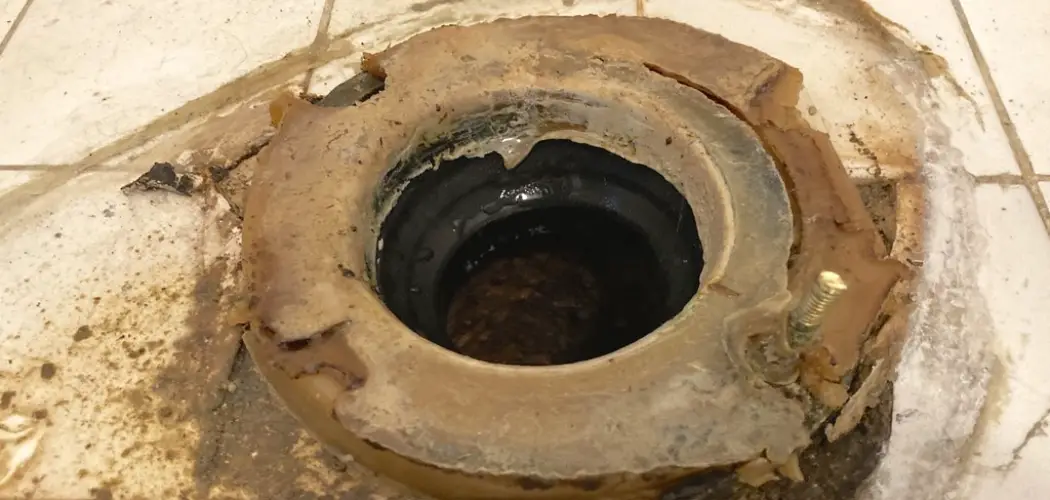Having a properly functioning toilet is essential for any household. However, over time, the toilet flange, also known as the closet flange or drain pan, can become damaged or broken. This can lead to leaks and an unstable toilet that rocks back and forth when in use. In such cases, knowing to repair a toilet flange can save you from costly repairs and potential water damage.
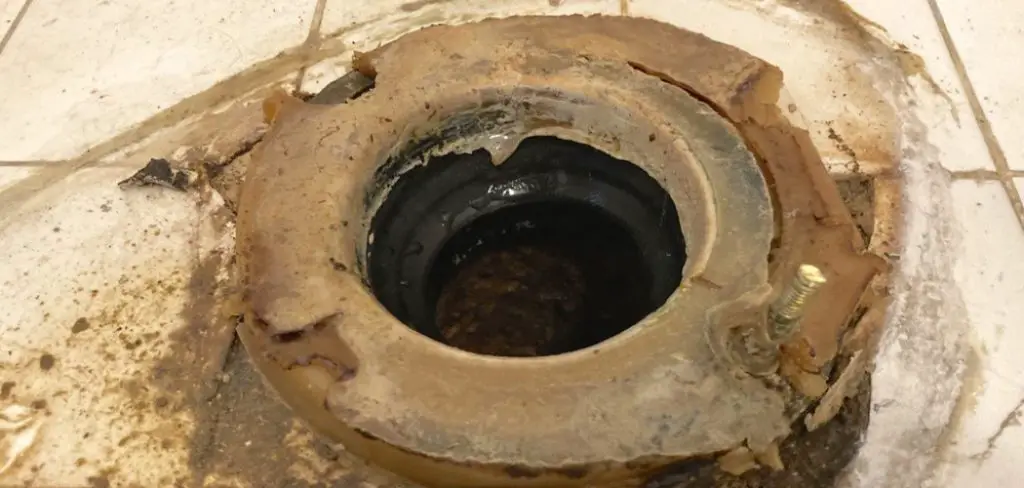
The main advantage of repairing a toilet flange is that it can save you time and money. Instead of having to call a plumber and spend money on their services, you can easily fix the issue yourself. This can also give you a sense of accomplishment and self-reliance. In this blog post, You will learn in detail how to repair a toilet flange.
Types of Toilet Flange
In addition to the traditional wax ring toilet flange, there are also other types of flanges available on the market today. These alternative designs offer different benefits and may be more suitable for certain installations.
1. Rubber Toilet Flange
A rubber toilet flange is made from a flexible material that allows for better alignment with the toilet and floor. This can help prevent leaks and can make installation easier. Rubber flanges are also more forgiving when it comes to slight variations in the toilet and floor, making them a popular choice for DIY installations.
2. Metal Toilet Flange
A metal toilet flange is another option that is known for its durability and strength. It is typically made from stainless steel or brass, which makes it resistant to rust and corrosion. This type of flange may be a more expensive option, but it can provide long-lasting support for your toilet.
3. PVC Toilet Flange
PVC toilet flanges are made from plastic and offer several advantages over other materials. They are lightweight, making them easy to handle during installation, and they are also resistant to corrosion and chemicals. These flanges are often used in new construction, as they can be easily installed on concrete floors without the need for specialized tools or skills.
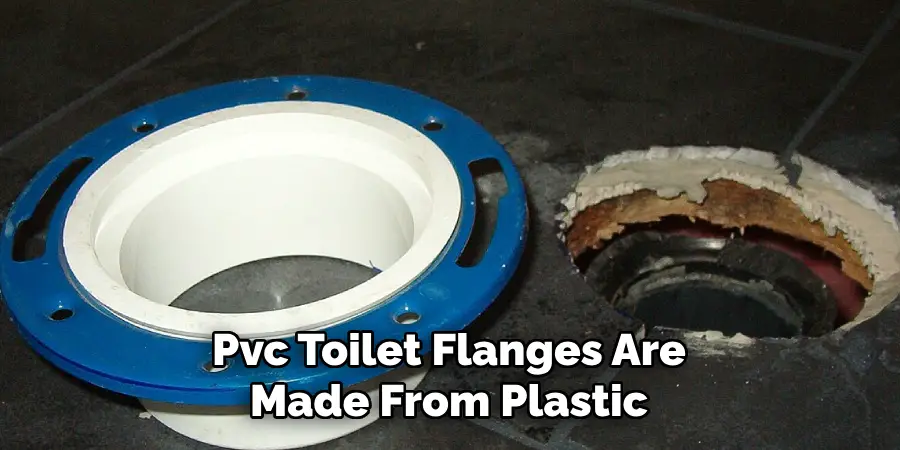
4. Offset Toilet Flange
An offset toilet flange is designed for installations where the drain pipe is not directly below the center of the toilet. This type of flange allows you to position the toilet at a different angle, which can be helpful in tight spaces or when dealing with an existing drain that cannot be moved. Offset flanges may come in various sizes to accommodate different offsets.
5. Push-in Toilet Flange
A push-in toilet flange is a newer design that eliminates the need for screws and bolts during installation. This type of flange simply pushes into place over the drain pipe, creating a secure seal without the use of tools. Push-in flanges are popular for their ease of installation and can also be used with a variety of floor types, such as tile or hardwood.
6. HydroSeat Toilet Flange
The HydroSeat toilet flange is another innovative design that combines the benefits of rubber and metal material. It features a rubber gasket that creates a tight seal with the toilet and a metal ring for added stability. This type of flange is ideal for uneven or damaged floors, as it can bridge the gap between the floor and toilet to prevent leaks.
Tools and Materials You Will Need
- Hammer
- Screwdriver
- Measuring tape
- Level
- Pliers
- Utility knife
- Safety glasses
- Drill
- Screws and nails
- Ladder
In addition to the basic tools listed above, there are several other materials and equipment that you may need for various home improvement projects. These tools can make your DIY project easier and more efficient, saving you time and effort in the long run.
Step-by-step Instructions for How to Repair a Toilet Flange
Step 1: Inspect the Toilet Flange
Before you begin, make sure you have all the necessary tools for the job. This includes a new toilet flange, wax ring, plumber’s putty, hacksaw, pliers and an adjustable wrench. Once you have all the tools ready, inspect the toilet flange to determine if it needs repair. Look for any cracks or signs of damage.
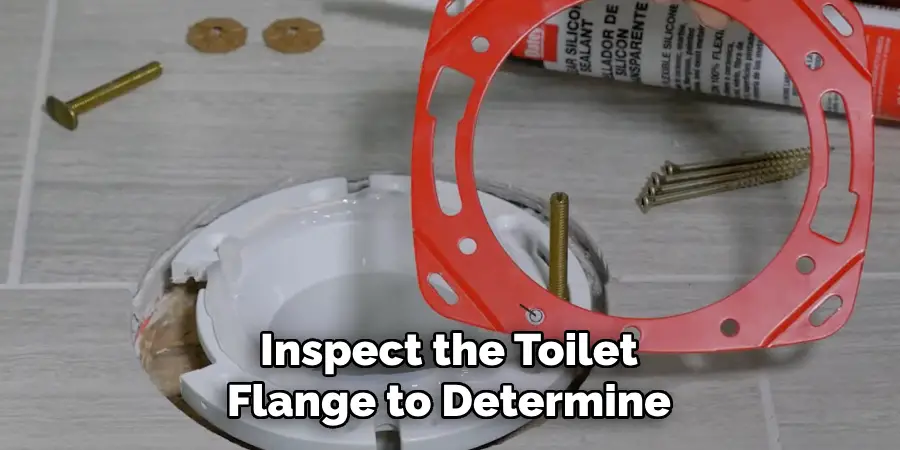
Step 2: Shut Off Water Supply
Before starting any repairs, you must shut off the water supply to the toilet. This can usually be done by turning the valve located behind or near the toilet clockwise. Flush the toilet to drain out any remaining water in the tank and bowl.
Using a wrench, unscrew the bolts that hold the toilet bowl to the flange. You may need to use a hacksaw to cut through any rusted bolts. Once the bolts are removed, carefully lift the toilet bowl and place it on a nearby towel or cloth.
Step 3: Remove Old Wax Ring
The wax ring is what seals the connection between the toilet and flange. Carefully remove the old wax ring and discard it. Make sure to also scrape off any residue left on the flange or toilet. After removing the wax ring, inspect the toilet flange for any damage or deterioration. If there are any cracks or breaks, you will need to replace the entire flange with a new one.
Step 4: Install New Flange
If the flange is damaged, use a hacksaw to carefully cut off the old flange. Then, place the new flange on top of the existing pipe and secure it with screws or bolts. Using plumber’s putty, create a seal around the base of the toilet flange. This will help prevent any leaks from occurring.
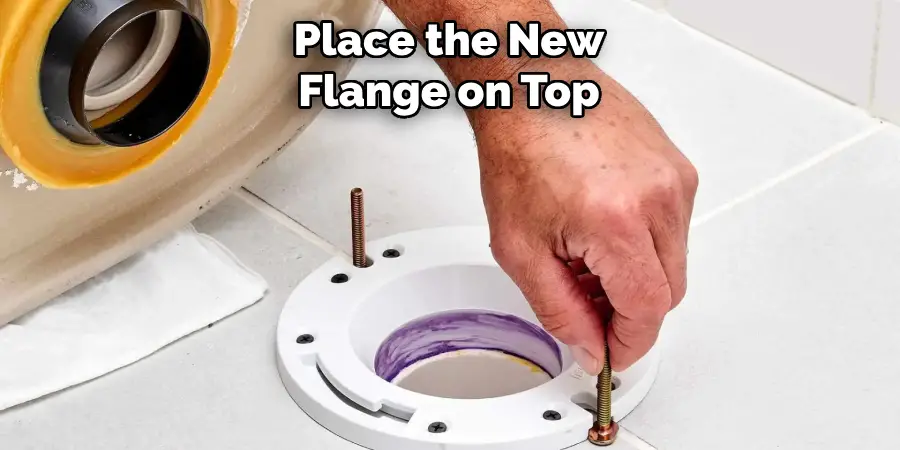
Step 5: Place New Wax Ring
Carefully place the new wax ring on top of the toilet flange. Make sure it is centered and evenly pressed onto the flange to create a tight seal. Place the toilet bowl back onto the flange, making sure to line up the bolt holes. Carefully tighten the bolts with a wrench, but be careful not to over-tighten as this could crack the porcelain of the toilet.
Step 6: Turn Water Supply Back On
Once the toilet bowl is securely attached, turn the water supply back on and flush the toilet to ensure everything is working properly. Check for any leaks or wobbling, and make any necessary adjustments.
By following these step-by-step instructions, you can easily repair a toilet flange and have your toilet working like new again. Remember to always use caution when working with plumbing and if necessary, don’t hesitate to call a professional for help.
Safety Tips for How to Repair a Toilet Flange
- Always wear protective gear such as gloves, goggles and a face mask when handling any toilet repairs.
- Make sure to shut off the water supply before attempting any repairs on the toilet flange.
- Use caution when using tools and be aware of your surroundings to prevent accidents or injuries.
- Before beginning any repairs, read the manufacturer’s instructions carefully and familiarize yourself with the proper procedures.
- Inspect the toilet flange for any damage or wear and tear before attempting to repair it.
- If you are unsure or uncomfortable with repairing the toilet flange yourself, seek professional help from a plumber.
- Always have a backup plan in case the repair does not go as expected, such as having another working bathroom available.
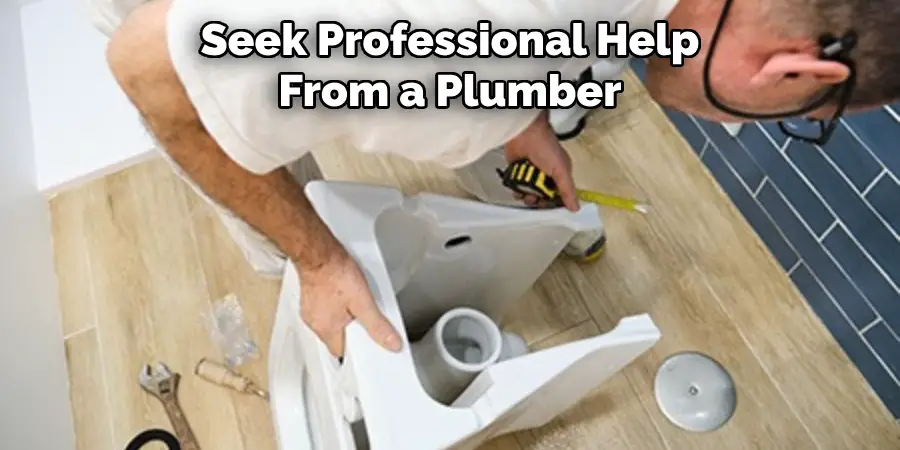
When it comes to home repairs, safety should always be a top priority. This is especially true when it comes to repairing a toilet flange, as it involves working with water and potentially hazardous materials.
Common Issues for Repairing a Toilet Flange
- Loose or Damaged Toilet Flange – This is the most common issue that requires repairing a toilet flange. The flange can become loose over time due to constant use and can also crack or break, causing leaks.
- Leaking Wax Seal – The wax seal between the toilet and the flange can wear out over time, causing water to leak onto the bathroom floor.
- Broken Bolts – The bolts that secure the toilet to the flange can become rusted or broken, making it difficult to remove and replace the toilet.
- Uneven Flooring – If the flooring around the toilet is not level, it can cause the toilet flange to become uneven, leading to leaks and other issues.
- Improper Installation – If the toilet flange was not installed correctly, it can cause problems such as leaks or an unstable toilet.
- Build-up of Debris or Foreign Objects – Objects such as toys, hair and other debris can get stuck in the toilet flange and cause blockages or damage.
- Wear and Tear Over Time – Like any other plumbing fixture, toilets and their components can wear out over time and require repairs or replacement.
It is important to address these issues as soon as they are noticed to prevent further damage and potential health hazards. Regular maintenance and inspections of the toilet flange can also help identify any potential problems before they become major issues.
Importance of Repairing a Toilet Flange
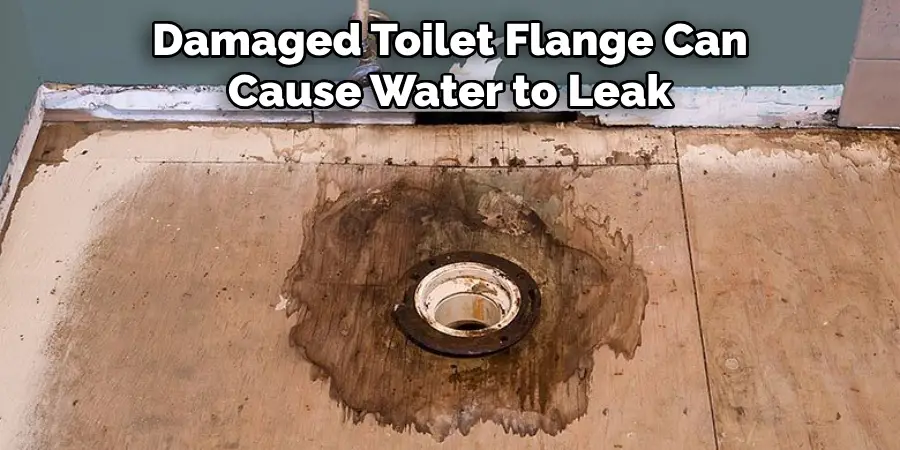
- Prevents Water Leakage: A damaged toilet flange can cause water to leak from the base of the toilet, which can lead to mold growth and damage to your bathroom floor. Repairing a toilet flange is essential to prevent any potential water damage.
- Improves Toilet Stability: The toilet flange acts as a support system for the toilet, keeping it in place. If the flange is damaged, it can cause the toilet to become wobbly or even shift from its position. Repairing the flange ensures that your toilet remains stable and secure.
- Avoids Foul Smells: A damaged toilet flange can also cause foul odors to seep into your bathroom due to improper sealing. This can be a major nuisance and can make your bathroom unpleasant to use. Fixing the flange will seal off any gaps and eliminate any unwanted smells.
- Saves Money: Ignoring a damaged toilet flange can result in more significant problems down the line, such as a broken toilet or water damage. By repairing the flange promptly, you can save yourself from expensive repairs later on.
- Maintains Hygiene: A leaking toilet flange can create an unsanitary environment in your bathroom, making it a breeding ground for bacteria and germs. Repairing the flange ensures that your bathroom remains clean and hygienic.
- Extends the Lifespan of Your Toilet: The toilet flange is a crucial component in the functioning of your toilet. By repairing any damage, you can prolong the lifespan of your toilet and avoid having to replace it prematurely.
- Increases Property Value: A well-maintained bathroom is a major selling point for potential buyers. By repairing a damaged toilet flange, you not only improve the functionality and appearance of your bathroom but also increase the value of your property.
It not only prevents potential water damage, foul smells, and unhygienic conditions but also saves you money in the long run and adds value to your property. Regularly checking and repairing any damage to your toilet flange is a simple yet essential step in maintaining a clean and functional bathroom.
Preventive Measures After Repairing a Toilet Flange
- Regular Inspection: After repairing a toilet flange, it is important to conduct regular inspections to ensure that the repair was successful and there are no new issues arising. This will help prevent any future problems and ensure that your toilet remains in good working condition.
- Check for Leaks: Make sure to check for any leaks around the toilet flange area after repairing it. Even if the repair was successful, there may still be small leaks that could lead to bigger issues over time. It is important to fix any leaks as soon as possible to avoid a potential water damage.
- Keep the Area Clean: After repairing the toilet flange, make sure to clean the area thoroughly and keep it free from any debris or dirt. This will not only prevent any potential clogs or blockages, but it will also keep the area hygienic and sanitary.
- Use Proper Toilet Paper: It is important to use toilet paper that is septic safe and easily degradable. This will prevent any clogs in the toilet pipes, which can lead to a damaged flange over time. Avoid using thick or scented toilet paper that can be difficult for the pipes to handle.
- Avoid Harsh Chemicals: When cleaning your toilet, avoid using harsh chemicals that can damage the flange or other parts of the toilet. Instead, opt for natural and safe cleaners or use a plunger if there are any clogs. This will help maintain the integrity of the flange and prevent any further repairs.
- Be Mindful of Flushing Habits: Teach everyone in your household to be mindful of what they flush down the toilet. Avoid flushing anything other than human waste and toilet paper, as foreign objects can cause damage to the flange and pipes. Consider placing a sign or reminder near the toilet to help prevent accidental flushing of improper items.
- Seek Professional Help: If you notice any recurring issues with your toilet or the flange, it is best to seek professional help. A plumber will be able to properly diagnose and fix any underlying problems that could lead to further damage in the future. Do not hesitate to call for assistance if needed.
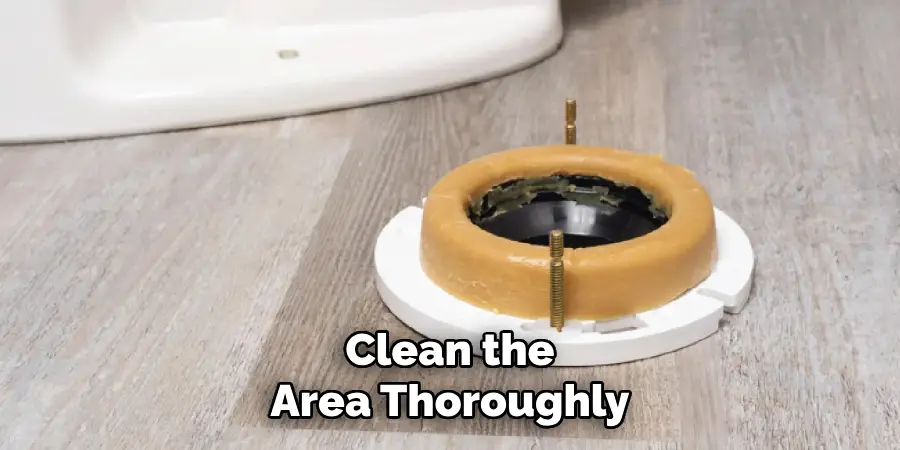
By following these preventive measures, you can ensure that your toilet flange remains in good condition and avoid any costly repairs or replacements in the future. Remember to always take care of your toilet and regularly maintain it to keep it functioning properly.
Techniques for Repairing a Toilet Flange
- Inspect the Flange: Before attempting to repair a toilet flange, it is important to thoroughly inspect it for any damage or corrosion. This will help determine the extent of the repairs needed.
- Purchase a Repair Kit: There are many different types of toilet flange repair kits available on the market. Make sure to choose one that is suitable for your specific type of flange.
- Gather Tools and Materials: In addition to the repair kit, you will also need a few basic tools such as a wrench, pliers, and a screwdriver. Make sure to have all necessary materials on hand before beginning the repairs.
- Remove the Toilet: Before starting any repairs, it is important to remove the toilet from the flange. This will give you better access to the flange and prevent any damage to the toilet.
- Clean the Area: Once the toilet is removed, clean the area around the flange thoroughly. Remove any old wax or caulk and make sure the surface is smooth and free of debris.
- Install Repair Kit: Follow the instructions provided with your repair kit to properly install it onto the flange. Make sure to tighten all screws and bolts securely.
- Reinstall Toilet: After the repair kit is installed, carefully place the toilet back onto the flange and secure it with new wax or caulk. Test the toilet by flushing it a few times to ensure that it is working properly.
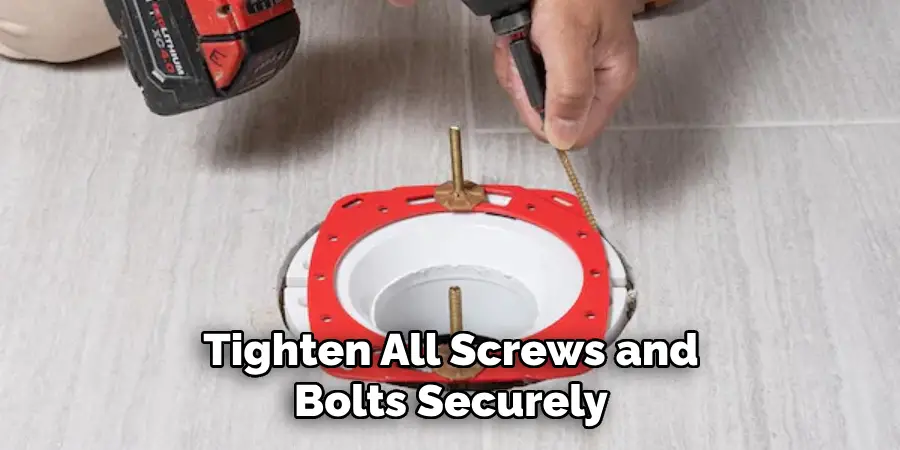
By following these techniques, you can easily repair a damaged or corroded toilet flange and avoid the hassle and expense of hiring a professional plumber. It is important to regularly inspect your toilet flange for any signs of damage and address any issues promptly to prevent further damage.
Conclusion
In conclusion, repairing a toilet flange is not as daunting of a task as it may seem. With the right tools and knowledge, anyone can successfully complete this DIY project. One important thing to keep in mind is to always turn off the water supply before attempting any repairs.
This will prevent any potential messes or accidents. Another key step is to thoroughly clean the area around the flange before installing the new one. This will ensure a proper seal and prevent any future leaks.
Once you have everything prepared and ready to go, carefully follow the steps outlined in this blog to remove the old flange and install the new one. Remember to use proper safety precautions, such as wearing gloves and protective eyewear. I hope this article has been beneficial for learning how to repair a toilet flange. Make Sure the precautionary measures are followed chronologically.

